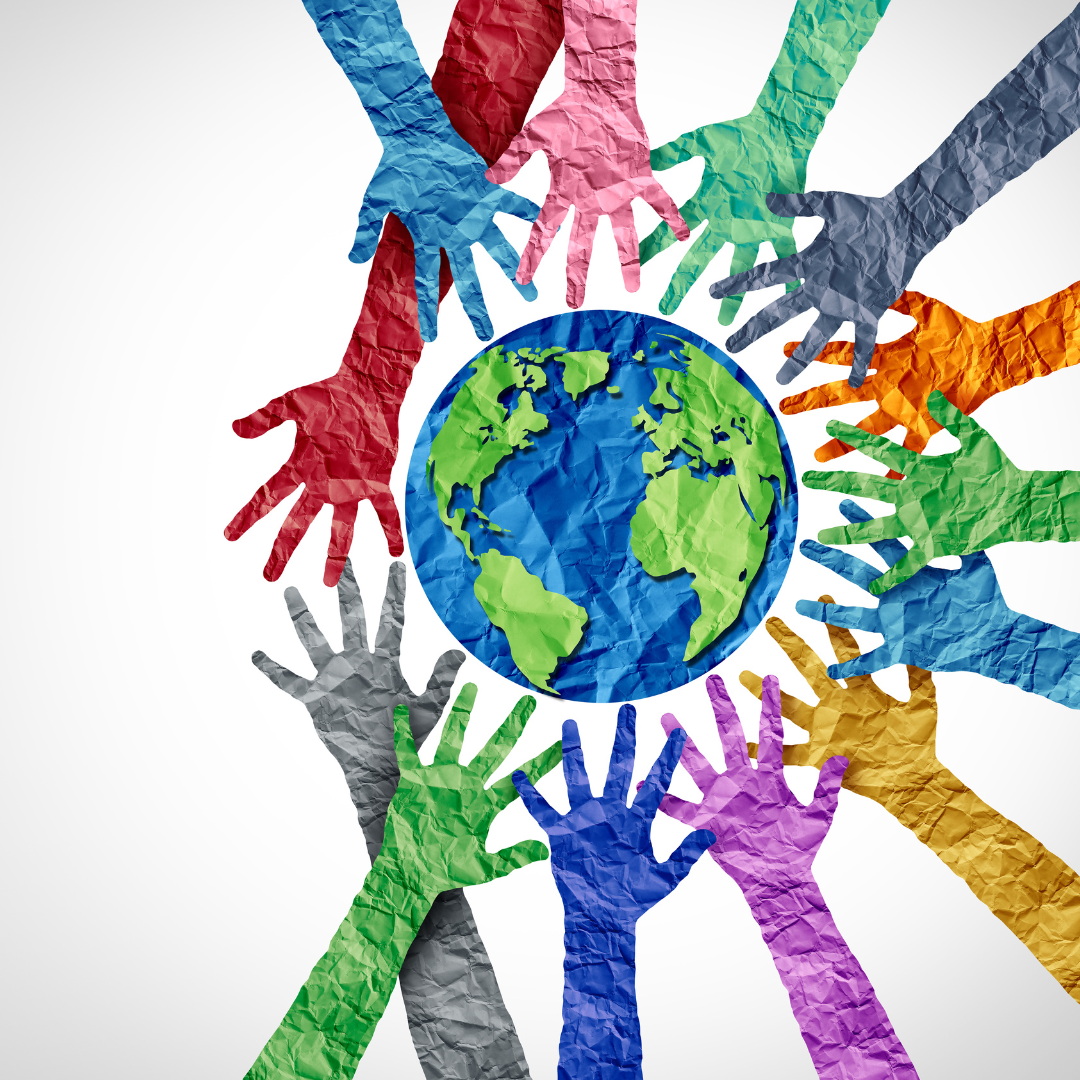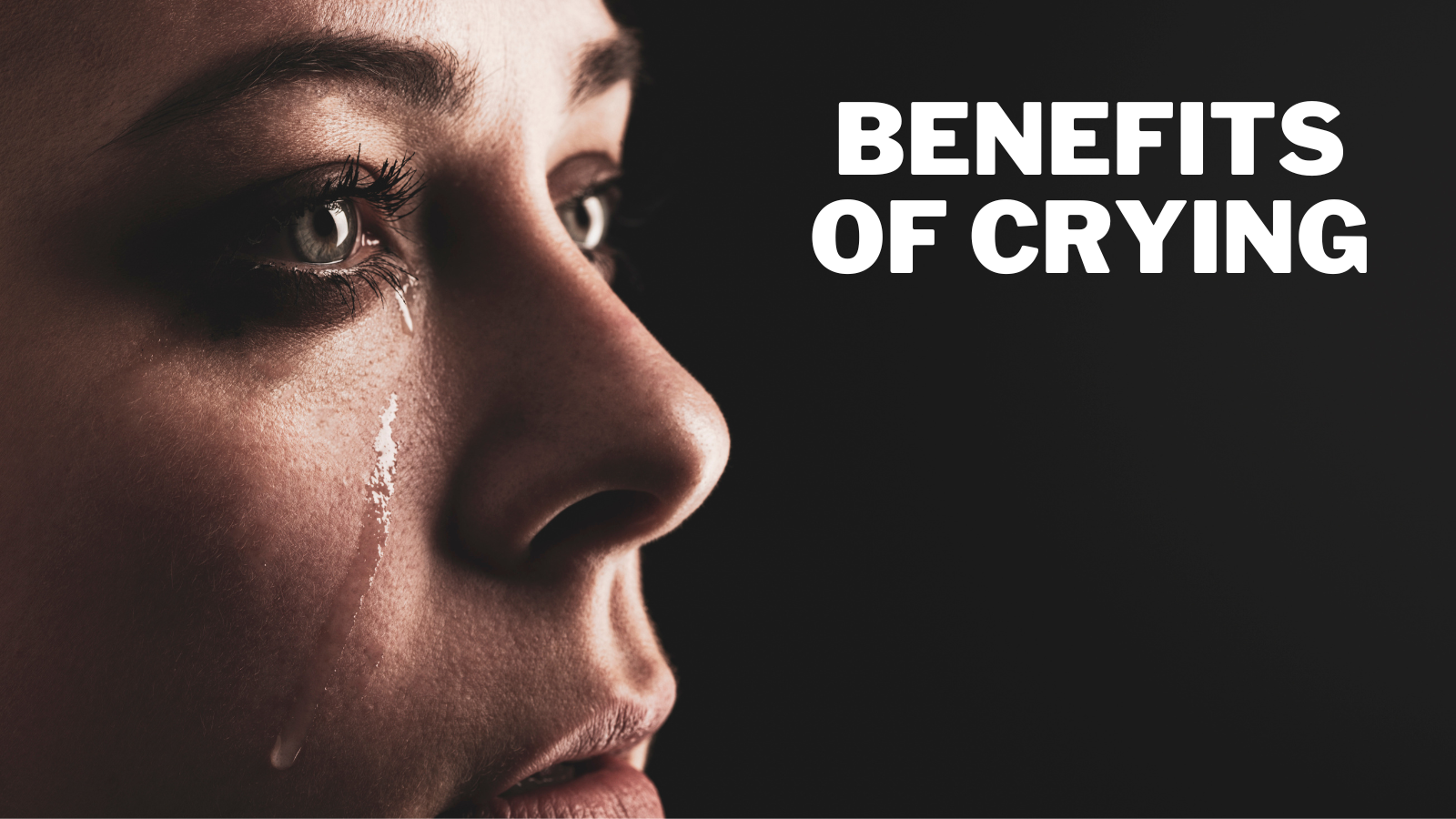Benefits Of Crying
Benefits Of Crying
Crying is often seen as a sign of weakness or vulnerability. Still, it is a natural and healthy way for our bodies and minds to release emotions. Whether we are shedding tears of joy, sadness, or frustration, crying has numerous benefits for our mental and physical well-being.
In this blog, we will explore the science behind crying and the benefits of crying. You might be surprised at how powerful a good cry can be, from reducing stress to improving mood. Here are some details on the science behind crying.
Scientific research on crying has provided interesting insights into this natural human behaviour's physiological, psychological, and social aspects.

1. Authenticity And Vulnerability
Authenticity and vulnerability are important aspects of human connection and emotional intimacy. When someone cries, it often signals that they are experiencing genuine emotions and are willing to express their innermost feelings.
This can create a sense of authenticity, as crying is a raw and unfiltered expression of emotions, allowing others to see the person as they are in that moment.
Crying can also signal vulnerability, as it shows a willingness to open oneself up emotionally and share their inner world with others.
This vulnerability can create a sense of trust and intimacy in interpersonal interactions, as it encourages others to reciprocate by sharing their own emotions and experiences.
It can make a safe space for open and honest communication, as crying breaks down barriers and creates a genuine connection between individuals.
When someone cries and expresses their authentic emotions, it can evoke empathy and compassion in others. Witnessing someone's tears can elicit a natural response to provide comfort, support, and understanding.
This can foster deep emotional connections, allowing for a shared emotional experience and promoting empathy and understanding among individuals.
2. Physical Benefits
Crying is not just an emotional response. It also has physical benefits. Tears contain natural painkillers, such as endorphins, which can help reduce pain and promote well-being. In addition, tears can help flush out toxins from our bodies, reducing inflammation and stress.
Crying can also stimulate the production of tears, which can help to keep our eyes moist and healthy. This can be particularly beneficial for people who suffer from dry eye syndrome or other eye-related conditions.
Research has also shown that crying can help lower blood pressure and heart rate, reducing the risk of heart disease and other related health problems.
It can also help to boost our immune system by promoting the production of white blood cells, which can help to fight off infections and diseases.

3. Catharsis And Healing
Catharsis is the process of releasing or purging strong emotions, and crying has been found to have a cathartic effect on individuals. We can express and release pent-up emotions when we cry, providing a sense of emotional relief and release.
This can be particularly beneficial when emotions have been suppressed or bottled up, such as during emotional distress, trauma, or grief.
Crying can serve as a dynamic outlet, allowing individuals to express their emotions healthily and naturally. It provides a release valve for overwhelming feelings, allowing individuals to release the emotional burden they may be carrying. This release of emotions can bring a sense of emotional relief and help individuals feel lighter and more emotionally balanced.
Moreover, crying can facilitate healing and recovery from emotional wounds, trauma, or grief. When individuals allow themselves to fully express their emotions through crying, it can promote emotional processing and integration.
It can help individuals understand their emotions, process their feelings, and make sense of their experiences. This emotional processing and integration can contribute to emotional healing and recovery, allowing individuals to move through their emotional pain and find closure.
4. Emotional Benefits
Crying is an emotional release that can help us feel more balanced and reduce stress and anxiety. When we cry, we release pent-up emotions and allow ourselves to process difficult feelings. This can help us to feel more emotionally regulated and reduce the intensity of our feelings.
Crying can also be a way to express vulnerability and connect with others on a deeper level. It can create a sense of empathy and understanding as we allow ourselves to be open and honest about our emotions.

5. Improved Mood
Crying can improve our mood by releasing feel-good hormones like oxytocin and endorphins. Oxytocin is often called the “love hormone” associated with social bonding and closeness. Endorphins are natural painkillers that can promote feelings of well-being and reduce stress.
When we cry, these hormones are released, which can help reduce sadness and make us feel happier and more relaxed. This can be particularly beneficial when we feel overwhelmed or stressed, as crying can provide relief and release.
6. Better Communication
Crying can be a powerful way to communicate our emotions to others. When we cry, we show vulnerability and allow others to see how we feel. This helps build trust and strengthen relationships, allowing us to connect more deeply.
Crying can also be a way to express empathy and understanding toward others. When we see someone else crying, we are often more inclined to listen and provide support, as we can sense their emotional state.
Research has also shown that crying can help improve emotional intelligence, which is understanding and managing our emotions and those of others. By allowing ourselves to express our feelings, we can develop a greater awareness of our emotional states and those of others.

7. Increased Empathy
Witnessing someone else crying can profoundly impact our emotions and behaviour. When we see tears in someone's eyes, it can activate our empathy, which is the ability to understand and share the feelings of others.
This activation of the heart helps us to connect with the person on a deeper level, as we can imagine ourselves in their shoes and understand their emotional state. As a result, we may experience increased compassion and a natural inclination to offer support and comfort.
Crying is a powerful signal of distress and emotion. It can express deep-seated emotions such as sadness, grief, pain, or frustration.
When we witness someone crying, it can trigger our own emotional response as we empathize with their emotional state. We may feel a sense of shared experience or resonance, further activating our empathy and compassion.
The sight of tears and the vulnerability associated with crying can evoke a natural response to provide comfort and support. We may feel a sense of responsibility or care towards the person who is crying, which can prompt us to offer words of comfort, physical gestures of support, or lend a listening ear.
This response is driven by our ability to sense the emotional state of the crying person and our natural inclination to alleviate their distress.
8. Cathartic Release
Crying is a natural response to emotional pain, stress, or overwhelming feelings. When we cry, we release tension and stress that has built up in our bodies and minds.
This can be a cathartic experience, as it allows us to process and release our emotions, which can help us feel lighter and more relieved.
Crying can also help us release negative emotions like sadness, anger, or frustration. By crying, we acknowledge and accept our feelings, which can help us move forward with a clearer head. It can also be a way to communicate our emotions to others, which can lead to greater understanding and support.

9. Strengthened Mental Health
Crying is often seen as a sign of weakness or vulnerability but can be a sign of emotional strength. When we cry, we acknowledge and confront our emotions, which takes courage and self-awareness.
By allowing ourselves to cry and express our feelings, we are taking an important step toward strengthening our mental health and resilience.
When we suppress or try to ignore our emotions, we may experience negative consequences such as anxiety, depression, or physical symptoms like headaches or fatigue.
By allowing ourselves to cry and process our emotions, we release the tension and stress that has built up in our bodies and minds. This can help us feel more grounded, centred, and resilient in adversity.
Crying can also be a way to practice self-compassion and self-care. We show kindness and understanding when we cry and express our emotions. This can help to build our self-esteem and self-confidence, which are important components of mental health and well-being.
10. Coping Mechanism
Crying can be a coping mechanism that helps us deal with difficult situations or traumatic experiences. When we experience something emotionally overwhelming, crying can be a way to release some of the emotional weight that we are carrying. This can help us feel more grounded and in control, even during difficult circumstances.
Crying can also be a way to process and make sense of our emotions. When we cry, we voice our feelings and acknowledge their importance.
This can be especially important when dealing with traumatic experiences or grief, as it allows us to begin to process and healthily make sense of our emotions.

11. Cultural Perspectives
Cultural perspectives on crying can vary widely around the world. In some cultures, crying is seen as a sign of strength and emotional depth and is even encouraged as a way to process difficult emotions. In other cultures, crying may be seen as a sign of weakness or taboo in certain settings.
For example, in some parts of the world, crying is seen as a natural and healthy expression of emotion. In Japan, for instance, crying is often seen as a way to show sincerity and empathy towards others and is even celebrated in some cultural contexts.
In other cultures, such as certain Native American tribes, crying can be seen as a way to connect with spiritual forces and heal emotional wounds.
12. Gender And Crying
Gendered expectations around crying can be pervasive in many cultures and societies worldwide. Women are often stereotyped as more emotional and sensitive, while men are expected to suppress their emotions and show strength at all times. However, these gendered expectations can be harmful and create barriers to healthy emotional expression for people of all genders.
For women, the expectation to be more expressive and sensitive can be positive and negative. On the one hand, it may be for women to express their emotions openly, which can lead to greater social support and understanding. On the other hand, it can also reinforce harmful gender stereotypes and create pressure to conform to traditional gender roles.
For men, the expectation to suppress emotions can negatively affect mental health and well-being. Research has shown that men are more likely to experience depression and other mental health issues, partly because of the societal pressure to hide or ignore their emotions.
By challenging these gendered expectations around crying and emotional expression, we can create a more supportive and inclusive environment for everyone, regardless of gender.

13. Crying And Creativity
Crying can act as a catalyst for creative expression by tapping into intense emotions. The heightened emotions that come with crying, such as sadness, grief, or frustration, can be a powerful source of inspiration for artists.
These emotions can fuel the creative process, allowing artists to access a deeper and more authentic part of themselves and convey it as a way to express and process them.
Crying can also allow artists to access and express difficult or painful emotions that they might struggle to articulate in other ways. Some emotions, such as deep sorrow, heartbreak, or grief, can be overwhelming and challenging to put into words.
Allowing themselves to cry can be a cathartic release, enabling artists to channel these complex emotions into their work. This can result in raw, honest, and deeply meaningful art from a place of emotional authenticity.
Crying can facilitate raw and natural expression in art. When artists allow feelings and cry, they may tap into a vulnerability and authenticity that can shine through in their creative works.
Crying can strip away emotional barriers and social masks, allowing artists to express themselves genuinely and unfiltered. This can result in art that resonates deeply with others, conveying the artist's true emotions and experiences.
Art born from the emotional intensity of crying can carry profound meaning and impact. The raw and genuine emotions expressed through crying can infuse art with depth, resonance, and emotional weight.
This can make the art more relatable and impactful to the audience, as it conveys the artist's emotional truth powerfully and authentically.
It can also serve as a cathartic experience for the artist, allowing them to process and make sense of their emotions through their creative expression.

14. Mindfulness And Crying
Mindfulness practices like meditation can help us to become more aware of our feelings and allow them to flow more freely. By developing a greater sense of present-moment awareness, we can learn to observe our feelings without judgment or attachment, allowing them to arise and dissipate naturally.
Crying can be a natural extension of this mindfulness practice, allowing us to release pent-up emotions and achieve greater emotional balance. When we are in a state of mindfulness, we can better connect with our feelings and allow them to flow freely without fear or resistance. This can help us to release emotional tension and achieve a sense of inner peace and clarity.
15. Social Bonding
Social bonding is a fundamental aspect of human relationships, and crying can significantly foster emotional connections and intimacy among individuals.
When someone cries, it can elicit empathy and compassion from others, creating a sense of shared emotional experience. This can promote emotional connection and social bonding.
When we witness someone crying, it can trigger our natural empathic response. We may feel a deep emotional connection with the crying person, as we can relate to their distress and pain.
This empathy can create a strong bond between individuals, fostering understanding and shared emotions. It can also lead to a desire for comfort and support, strengthening interpersonal relationships.
Crying can also promote emotional intimacy, as it requires vulnerability and openness. When someone cries in front of others, it can signal a willingness to share their innermost feelings, thoughts, and struggles.
This vulnerability can create a sense of trust and closeness, as it invites others to reciprocate by sharing their emotions and experiences. This mutual sharing of feelings can deepen emotional connections and foster social support among individuals.
16. Hormonal And Chemical Changes
Tears have been found to contain higher levels of prolactin, a hormone that is associated with stress reduction. Prolactin has been shown to have a calming effect on the body and can help to reduce stress and promote relaxation. This may explain why individuals often feel emotionally relieved and more relaxed after a good cry.
Tears have also been found to contain endorphins, which are natural painkillers and mood elevators. Endorphins are known to improve mood and provide a sense of well-being.
When individuals cry, the release of endorphins can help to alleviate emotional pain and enhance mood, contributing to the potential therapeutic effects of crying.
Crying has also been associated with changes in neurotransmitter activity in the brain. For example, crying has been shown to increase the production of oxytocin, often called the “bonding hormone.”
Oxytocin is associated with social bonding, trust, and intimacy. Increased oxytocin levels during crying may contribute to the sense of emotional connection and social bonding that can occur when we witness or experience tears.

Conclusion
Crying is a natural and healthy way for our bodies and minds to release emotions. Despite the negative stigma surrounding crying, it has numerous benefits for physical and emotional well-being.
From reducing stress and anxiety to improving our mood and strengthening our relationships, crying can be a powerful tool for coping with difficult emotions and achieving greater emotional balance.
By embracing the tears and allowing ourselves to cry when needed, we can tap into the many benefits this natural human response offers. So don't be ashamed of shedding a tear – instead, celebrate the power of crying and all it can do for your mental and physical health.
I trust you enjoyed this article about the Benefits Of Crying. Please stay tuned for more blog posts to come shortly.
JeannetteZ
>>>Please click here to read my all-inclusive article about Lessons That Will Teach You All About Stress<<<
>>>Are you interested in Natural Healing And Stress Relief through Herbs? Please click here for my #1 Recommendation<<<
Your Opinion Is Important To Me
Thoughts? Ideas? Questions? I would love to hear from you. Please leave me your questions, experience, and remarks about the Benefits Of Crying in the comments section below. You can also reach me by email at Jeannette@Close-To-Nature.org.
Disclosure
This post may contain affiliate links. I earn from qualifying purchases as an Amazon Associate and other affiliate programs. Please read my full affiliate disclosure.
You might also enjoy these blog posts:
The Difference Between Worry Stress And Anxiety








